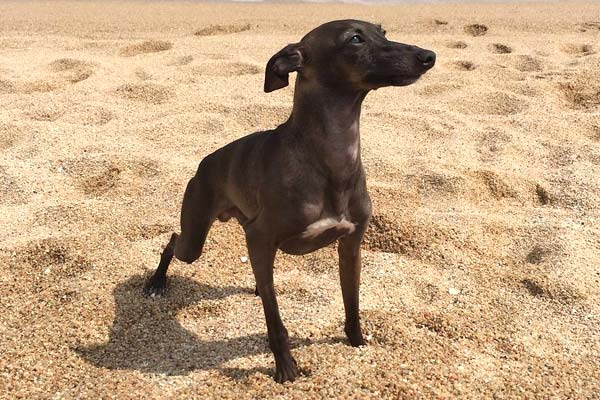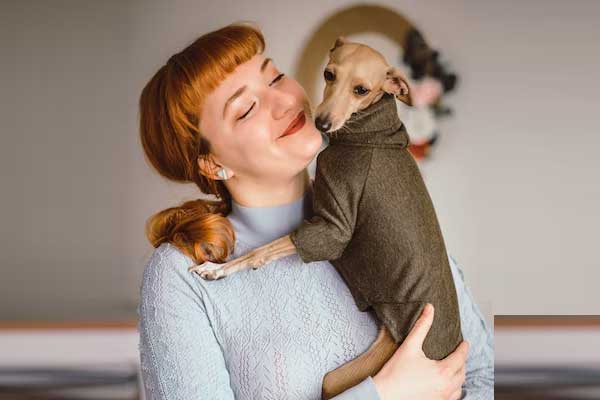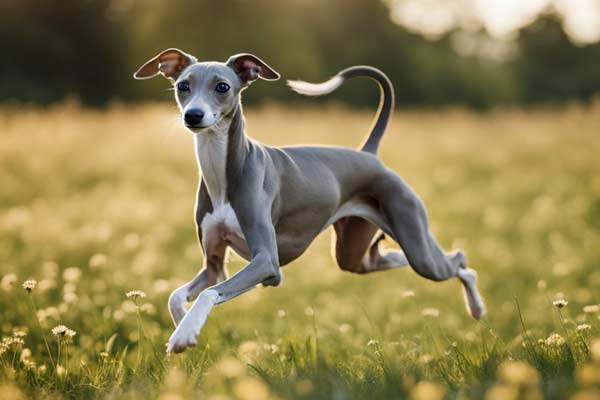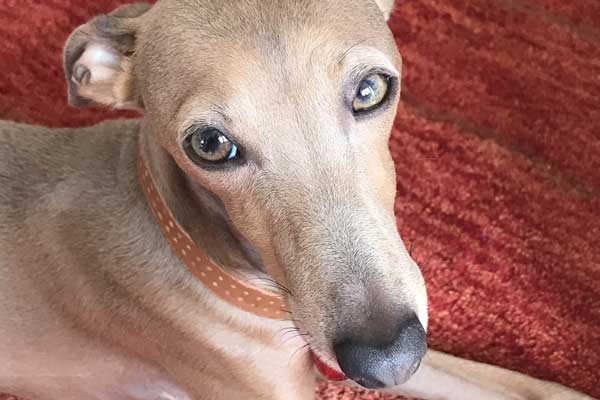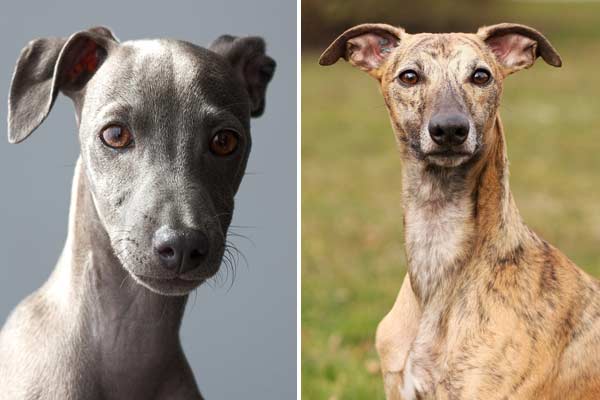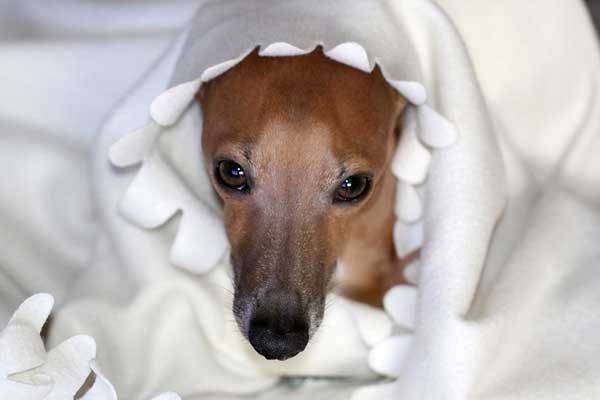Italian Greyhound Care: Tips and Tricks for Happy and Healthy Pups
Italian Greyhounds are a unique dog breed requiring specific care and attention. Recognized for their slim physique and delicate temperament, they are wonderful companions to those willing to invest time and patience in their proper care.
This article delves into the diverse aspects of looking after an Italian Greyhound, encompassing exercise, grooming, and health.
A crucial aspect of caring for an Italian Greyhound is ensuring they receive adequate exercise. Despite their small size, these dogs possess abundant energy that needs to be expended through daily strolls and play sessions. Italian Greyhounds should take at least two extended walks daily and have ample opportunities to run and frolic in a secure, fenced area.
Another vital aspect of looking after an Italian Greyhound involves addressing their grooming needs. Although their short, sleek coat necessitates little brushing, it’s essential to frequently clip their nails and clean their teeth to avert potential health problems.
Additionally, regular vet visits are essential to ensuring their overall health and well-being. By following these tips and providing your Italian Greyhound with the care they need, you can enjoy a happy and healthy life together.
Temperament and Training
Italian Greyhounds are known for their affectionate and gentle nature, making them excellent companion dogs. They are sensitive and can get easily stressed in noisy or chaotic environments, so creating a calm and quiet atmosphere for them to thrive is essential.
Regarding training, Italian Greyhounds showcase the intelligence and a desire to satisfy their owners. Nevertheless, they may occasionally display stubbornness, making patience and consistency crucial. Positive reinforcement techniques, like offering treats and verbal praise, prove most effective with this breed.
It’s important to start training and socializing Italian Greyhounds at a young age, as they can be shy or skittish around strangers and other dogs if they need to be correctly socialized. They also tend to bark excessively, so training them to control their barking is essential.
Housetraining can be challenging with Italian Greyhounds, as they have small bladders and may need to go outside frequently. Crate training and establishing a routine can help with this.
Overall, Italian Greyhounds serve as delightful and vigilant partners for those who dedicate themselves to providing the required time and effort for their training and care. They are amiable and treasure moments spent with their owners.
However, Italian Greyhounds might not be suitable for households with young kids or other animals that could be perceived as prey.
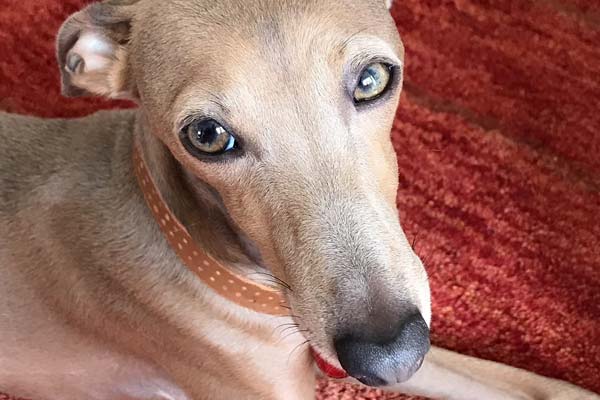
Grooming and Care
Italian Greyhounds are low maintenance when grooming, but regular care is essential to maintain their health and well-being.
Here are some Guidelines for Grooming and Caring for Your Italian Greyhound:
Coat Care
Italian Greyhounds have short, delicate fur that requires minimal upkeep. However, their coats offer limited insulation, and their slim frames make them susceptible to the cold. Brushing their coat routinely with a soft-bristled brush or grooming mitt contributes to a healthy, glossy appearance.
Bathing is essential and can vary from once a week to a maximum of every six weeks, based on their daily activities. Regular baths are necessary for preserving healthy skin and coats.
Dental Care
Italian Greyhounds are prone to dental issues, so a consistent dental care regimen is crucial. Brush their teeth at least twice to thrice a week using a dog-specific toothbrush and toothpaste. Additionally, dental chews and toys can aid in minimizing plaque accumulation and maintaining fresh breath.
Feeding
Italian Greyhounds are prone to autoimmune disorders and common health problems, so feeding them a well-balanced, high-quality diet is essential to maintain their overall health. Feed them a diet rich in protein, vitamins, and minerals, and avoid overfeeding to prevent obesity.
Shedding
Italian Greyhounds are known for their hypoallergenic nature and minimal shedding. Engaging in regular brushing sessions is beneficial to maintain their coat’s health and remove any loose hair.
Patellar Luxation
Patellar luxation, or slipped kneecaps, is a frequent health issue among Italian Greyhounds. Incorporating regular exercise and managing their weight can aid in preventing this condition.
Italian Greyhounds have relatively low grooming requirements, but consistent care remains crucial for their health and well-being. Setting up a routine dental care regimen, providing a nutritious diet, and ensuring regular physical activity can help prevent common health concerns.
Exercise and Toys
As a petite and lively breed, Italian Greyhounds need regular exercise to maintain their well-being and happiness. Despite their high energy levels, they are susceptible to injuries, making cautious exercise crucial. Below are some suggestions for safely exercising your Italian Greyhound:
Exercise Needs
Italian Greyhounds need to have a minimum of two extended walks each day, each lasting around an hour or longer. This contributes to their physical and mental well-being. Additionally, they enjoy running and engaging in playtime, so offering them ample opportunities for these activities is vital.
Walking and Running
Walking and running are great exercises for Italian Greyhounds. They love exploring their surroundings, so taking them on different routes daily can help keep them engaged. Running is also a good exercise, but slowly and gradually increasing the distance and speed is essential.
Indoor Activities
Italian Greyhounds are indoor dogs and do not do well in extreme temperatures. Keeping them indoors on hot days with the air conditioning on is essential. On cold days, they should be kept warm with blankets and sweaters. Indoor activities such as playing with toys can also give them exercise and mental stimulation.
Toys
Toys are an essential part of an Italian Greyhound’s exercise routine. They love to play and chew, so providing them with various toys can help keep them entertained and mentally stimulated. P puzzle and chew toys can also help keep their teeth clean and healthy.
Regular exercise and playtime are essential for the health and happiness of Italian Greyhounds. Walking, running, and indoor activities can give them the necessary exercise, while toys can keep them entertained and mentally stimulated.
It’s essential to provide them with a safe and comfortable environment to exercise in and to be mindful of their energy level and potential for injury.
Health and Common Problems
Italian Greyhounds are typically healthy canines but are predisposed to specific health concerns like any other breed. Awareness of these issues enables owners to provide appropriate pet care and treatment.
Dental problems are among the most prevalent health issues affecting Italian Greyhounds. Their compact mouths and tightly packed teeth increase their vulnerability to plaque accumulation, resulting in gum disease, tooth decay, and more extensive health complications. To mitigate these risks, it is advised that owners brush their dog’s teeth daily and arrange routine dental check-ups with a veterinarian.
Another common health issue in Italian Greyhounds is leg breaks and other fractures. Their long, skinny legs are more likely to break than other breeds. Owners should prevent their dogs from jumping from high surfaces or engaging in high-impact activities.
Italian Greyhounds are also susceptible to genetic conditions like progressive retinal atrophy, hip dysplasia, and Legg-Calve-Perthes disease.
These conditions can cause pain, discomfort, and mobility issues. Owners should have their dogs screened for these conditions and work with their veterinarian to develop a treatment plan if necessary.
Italian Greyhounds have a relatively long lifespan of 12-15 years. However, they are prone to specific age-related health issues, such as arthritis and vision loss. Owners should monitor their dogs for signs of these conditions and work with their veterinarian to manage them.
Italian Greyhounds are generally a fairly healthy breed; however, owners must remain informed about prevalent health concerns and implement measures to prevent and address them effectively.
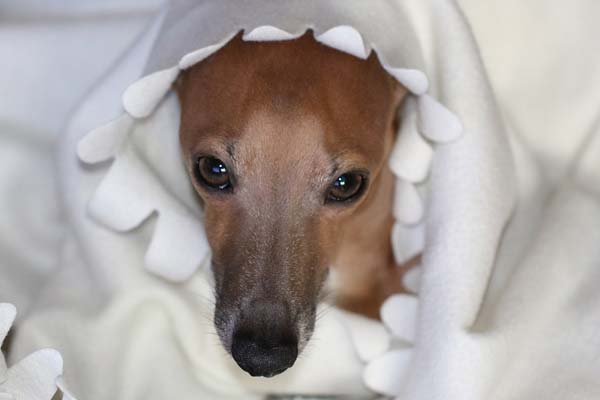
American Kennel Club and Status
The American Kennel Club (AKC), a non-profit organization dedicated to registering purebred dogs and advocating for responsible dog ownership, classifies the Italian Greyhound as part of the Toy Group.
The AKC establishes breed standards for each recognized breed, serving as the benchmark for evaluating dogs during shows. The Italian Greyhound breed standard outlines the ideal characteristics of the dog, encompassing appearance, temperament, and movement.
Being recognized by the AKC gives the Italian Greyhound a certain status in the dog world. It means that the breed has met specific criteria, such as having a sufficient population and a breed standard that is adhered to by breeders.
It also means that the breed can compete in AKC-sanctioned events, such as conformation shows, obedience trials, and agility trials.
Acknowledging that AKC recognition does not assure the quality of specific dogs or breeders is crucial. Buyers must conduct thorough research, seek out reputable breeders who perform health tests on their dogs and prioritize breeding for robust temperament and proper conformation.
In terms of popularity, the Italian Greyhound is not one of the most common breeds in the United States. According to AKC registration statistics, the Italian Greyhound ranked 73rd out of 197 breeds in 2020. This means that while the breed is not rare, it is not as widely owned as other breeds.
The Italian Greyhound’s recognition by the AKC and its moderate popularity contributes to its esteemed position in the canine community. However, it is vital to remember that individual dogs and breeders must be assessed based on their merits, irrespective of AKC recognition.
Conclusion
To conclude, Italian Greyhounds are a unique dog breed requiring particular care and attention. They exhibit affectionate and playful behavior but may also display sensitivity and shyness. Ensuring a secure and comfortable environment, ample exercise, and mental stimulation is paramount.
When caring for an Italian Greyhound, there are several essential factors to consider, such as:
- Feeding: Italian Greyhounds have a high metabolism and require a nutrient-rich diet to maintain their energy levels. Feeding them a balanced diet appropriate for their age, weight, and activity level is essential.
- Exercise: Italian Greyhounds are active dogs that require daily exercise to stay healthy and happy. They enjoy long walks, playtime, and running in a safe, enclosed area.
- Grooming: Italian Greyhounds have short hair that is easy to maintain but do shed. Regular brushing and occasional baths help keep their coat healthy and clean.
- Health: Italian Greyhounds typically enjoy good health; however, they may be susceptible to particular health concerns, including dental issues, eye disorders, and skin allergies. To maintain their overall well-being, scheduling consistent check-ups with a veterinarian is crucial.
Italian Greyhounds are similar to other sighthound breeds, like the Greyhound and Whippet, regarding their slender and lightweight bodies and reliance on keen vision, speed, and agility.
